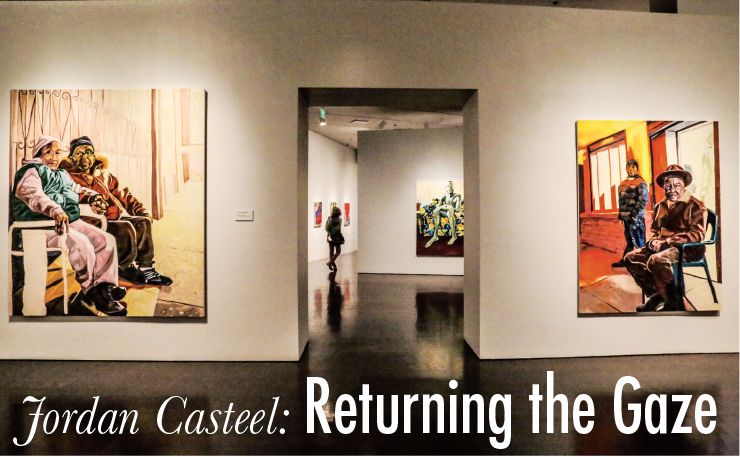
Jordan Casteel’s exhibit at the Denver Art Museum. Photo above: Denver native Jordan Casteel paints the people in her Harlem community, including Yvonne and James, left. “They were selling their wares on the street and it was cold,” says Casteel. “I went home and brought back some hot soup. I wanted to hang out with them because I was feeling far from home.”
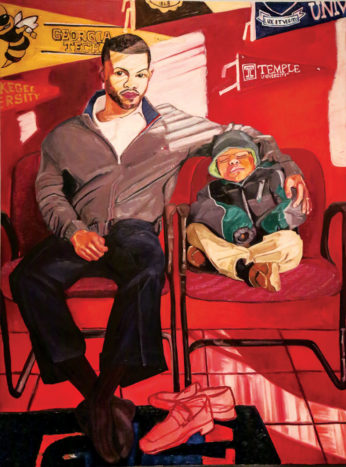
Casteel’s first subjects were her family and friends in Denver. Marcus and Jace depicts her family’s barber and his young son, Jace. “I love paint and color—being an observer and articulating my experience,” she says.
“The essence of my work is seeing people who haven’t been seen—people we might not notice,” says painter Jordan Casteel. “I want viewers to see their humanity and be empathetic. To know that everyone has a story: a past, present and future.”
Jordan Casteel: Returning the Gaze, at the Denver Art Museum through Aug. 18, presents a collection of about 30 paintings by the Denver-born artist, who now lives in Harlem, New York. The larger-than-life portraits depict people in her immediate community, including the subway, restaurants, on the street and in their homes. “All my subjects are alive and well and all are connected to me in some way.”
Casteel, 30, identifies her subjects by walking around her Harlem neighborhood and taking photos. “I stop and introduce myself and tell them what I’m doing. Almost everyone says ‘yes.’ They want to help me as a young person; they want to be a part of it.”
Casteel’s subjects return the viewer’s gaze, inviting us into their lives and reflecting the genuine exchange between painter and subject. “As I take non-stop photos, all I ask is that they look at me,” Casteel said.
Her subjects remain part of the process after their painting is done. “They come to the shows and they know when the paintings move around.”
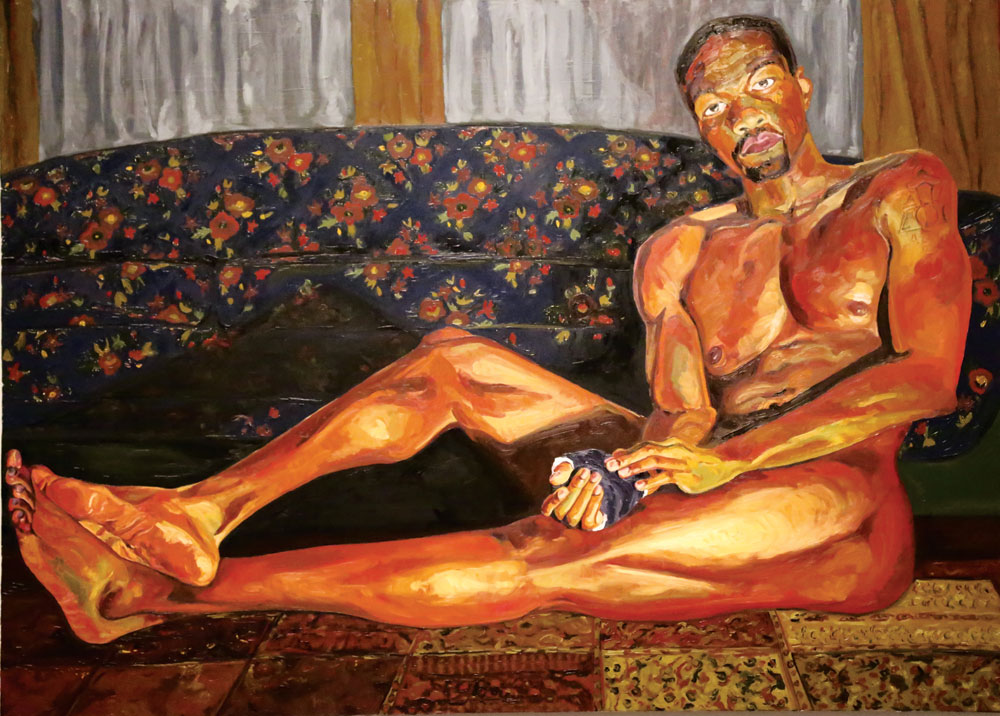
Yahya, one of Casteel’s Visible Man series. Yahya’s body reflects the firelight in the room. Casteel plays with skin tones, which may include blue, green, red or orange. “I try to get past skin color in order to see their humanity,” she says.
Casteel grew up in Park Hill and attended East High School. Her mother lives in Stapleton. “When I was growing up we had overnights in the old [DAM] museum building,” she says. “I never dreamed that my paintings would be on display here.”
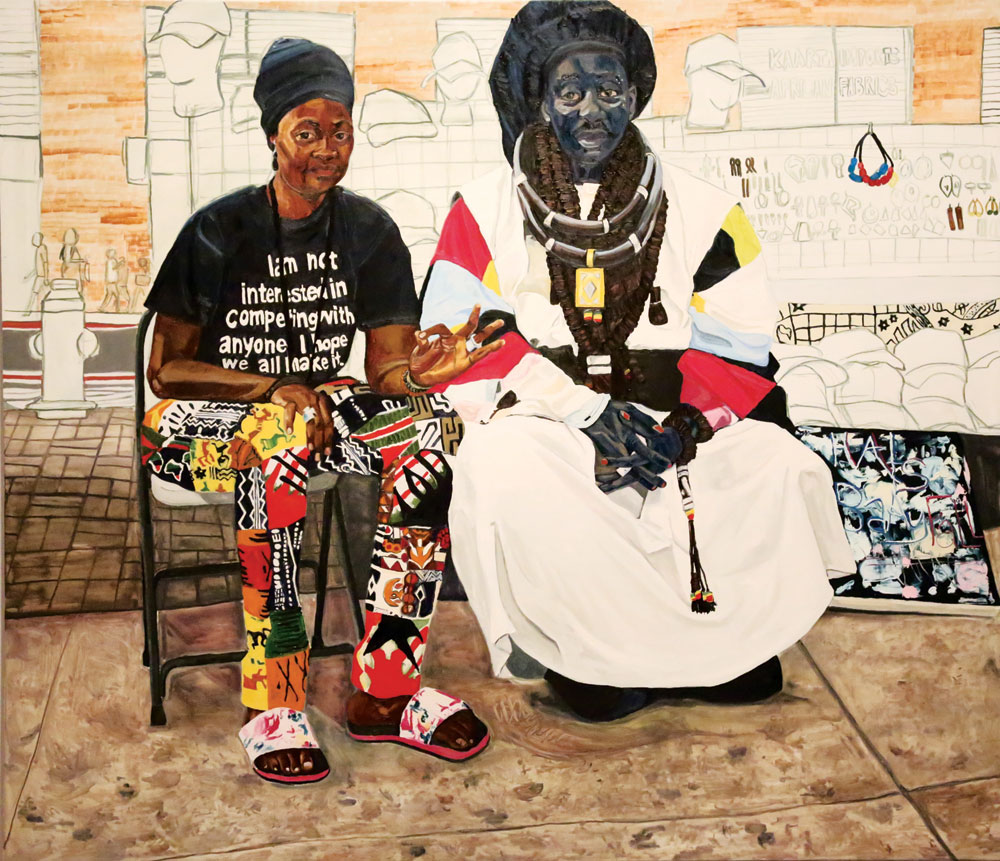
The Baayfalls sell jewelry and hats on the street. The people in Casteel’s paintings look straight out at the viewer. “It’s almost as if they’re asking a question or demanding your attention,” said Rebecca Hart, DAM curator of modern and contemporary art.
“Jordan was drawn to shape and color for as long as I can remember,” says Lauren Casteel, Jordan’s mom. “As the years went by, her proclivity to be a ‘maker and creative’ was clear, as she moved from project to project including coloring, pastels, clay, beading, sewing, ceramics, and pinhole cameras. Oil painting brought her the greatest joy.”
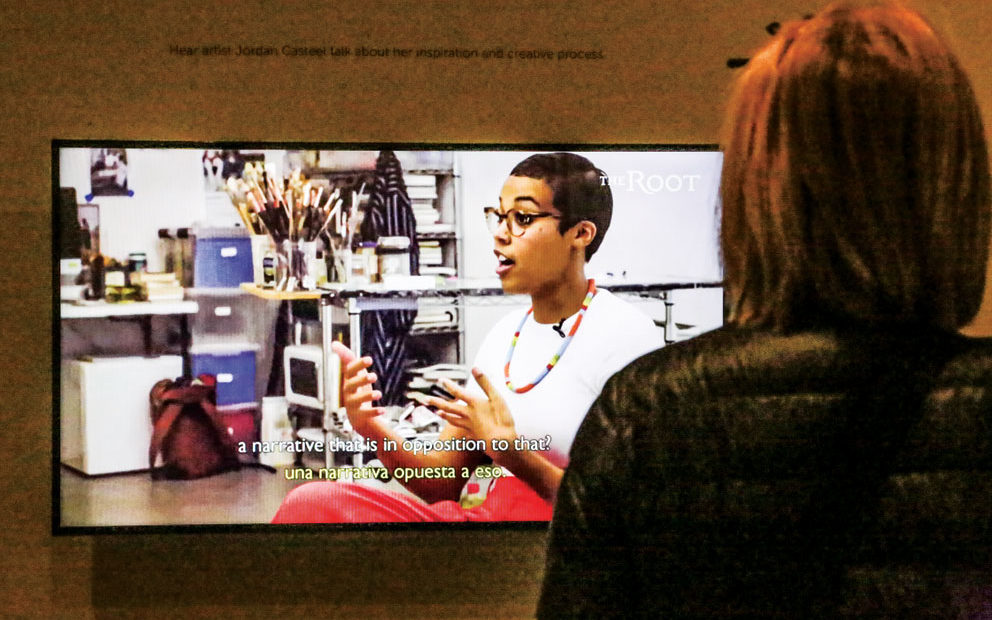
Casteel speaks in a video about her practice and her philosophy: “Everyone, whether in a bar or at a bus stop, is worthy to be celebrated. What does it mean to stop and say ‘Hello’”?
Casteel’s first subjects were her family and friends in Denver. Marcus and Jace depicts her family’s barber (Marcus Pope’s House of Hair in Park Hill) and his young son, Jace. “Jace is asleep and Marcus has his arm around him. There’s a tenderness there.”
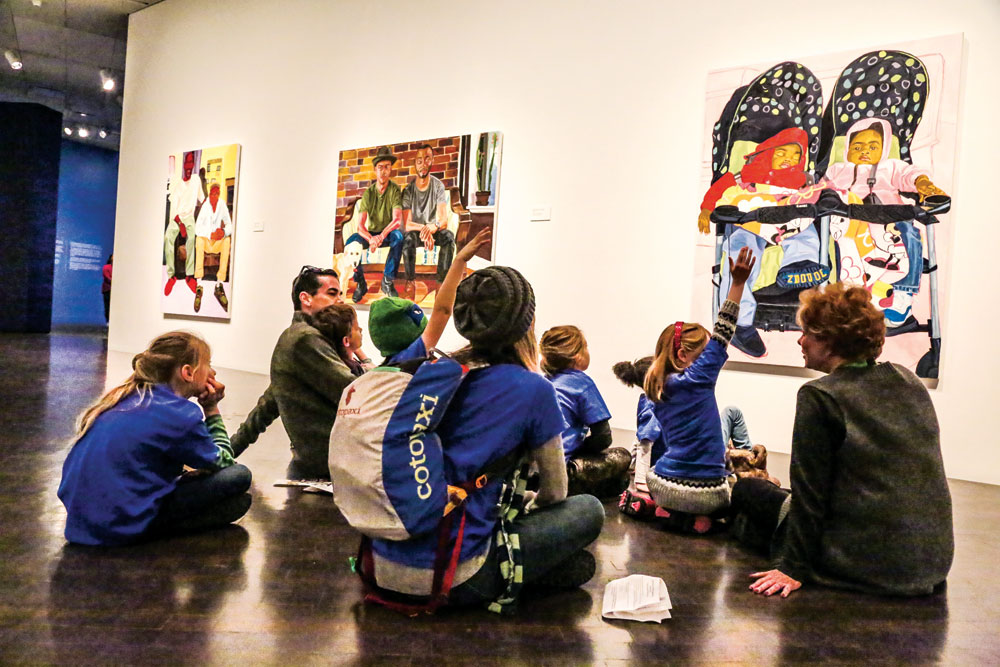
A group of school children ask questions about Casteel’s Twins. On finding subjects for her paintings, Casteel says, “I make connections with people and build community because friends refer me to friends.”
After earning her Master’s in Fine Art at Yale, Casteel moved to New York in 2015. “I was drawn to Harlem because of the energy and entrepreneurship there. I was inspired to paint the people who made their homes on the street—like Charles, a fur-seller, who looks so glorious sitting on a fallen newspaper stand.”
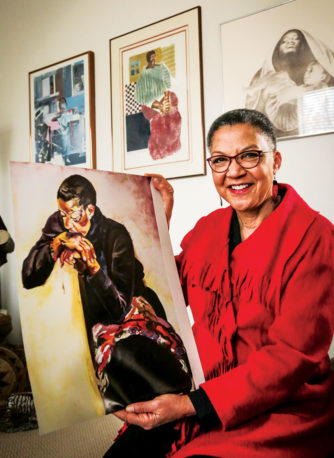
Lauren Casteel, Jordan’s mom, poses in her home in Stapleton with a print of the painting Jordan did of her. Lauren says Jordan’s depth of connection to others was reinforced by three years of volunteering monthly at The Gathering Place while she was in middle school at The Logan School.
Her Visible Man series depicts men in their personal spaces. “The intent is to expose my vision of Black men as I see them: as fathers, sons, brothers, cousins—as individuals with their own unique stories to share.”
Some of Casteel’s men leap off the canvas in vivid green, red or yellow skin tones. “I play with skin color to dispel assumptions people might make; to get past skin color in order to see their humanity.”
Sometimes her photos reveal details that she didn’t see at first. “I notice the words on t-shirts, like the woman’s in The Baayfalls that says, ‘I’m not interested in competing with anyone. I hope we all make it.’ It’s a powerful statement to wear language on your chest, like a shield.”
Casteel’s current paintings depict women, especially women entrepreneurs. Benyam features a matriarch in a family-operated Ethiopian restaurant that Casteel frequents.
“I feel a responsibility to give respect to living people. This is about us, not just me. Being an empathetic observer in the world will always be valuable, whatever your practice may be.”
For more information see denverartmuseum.org.



0 Comments